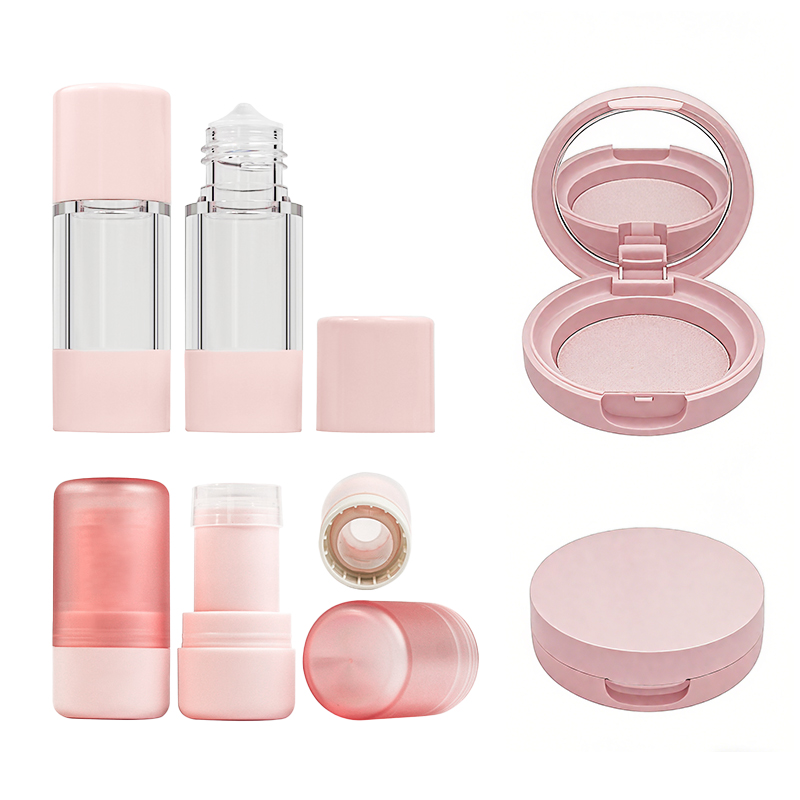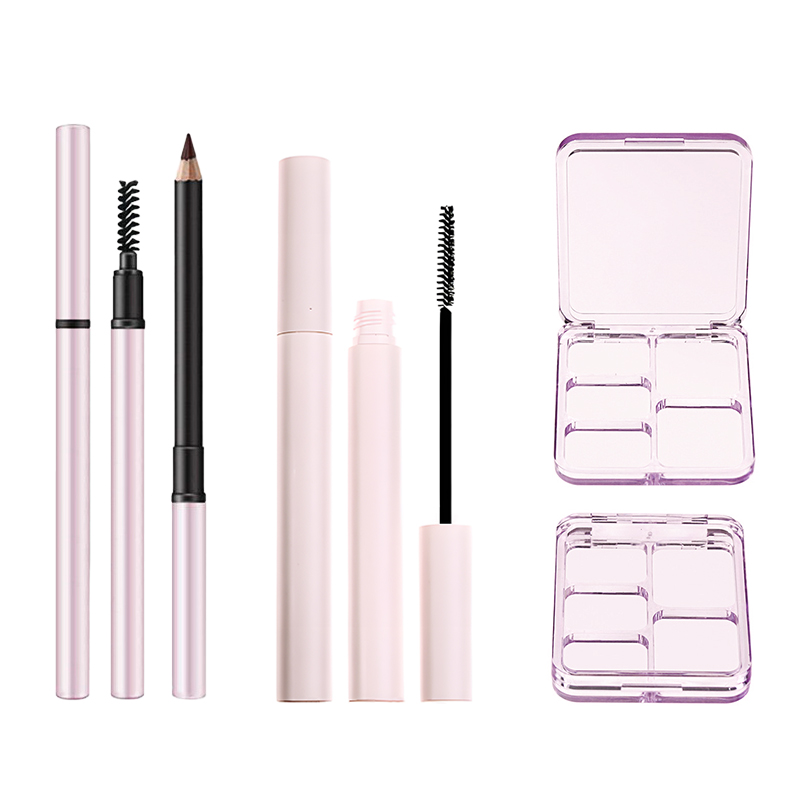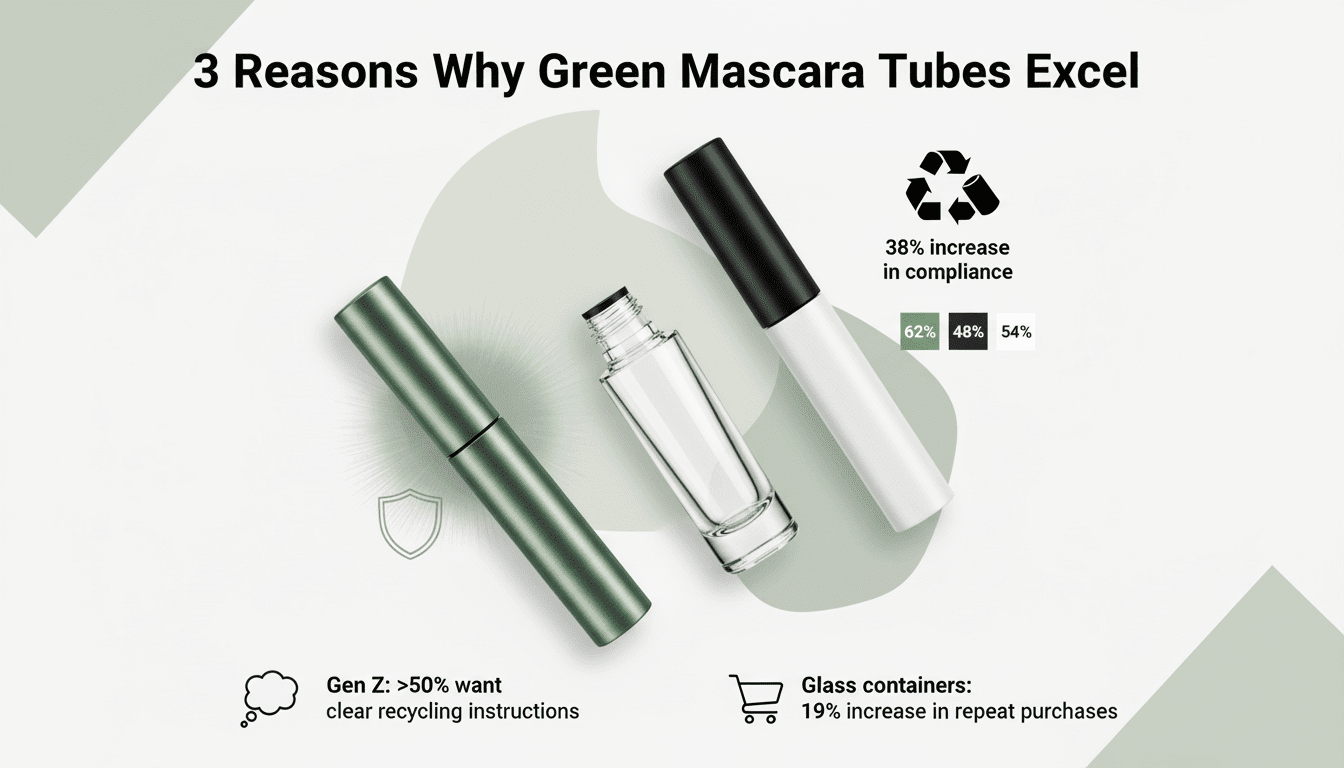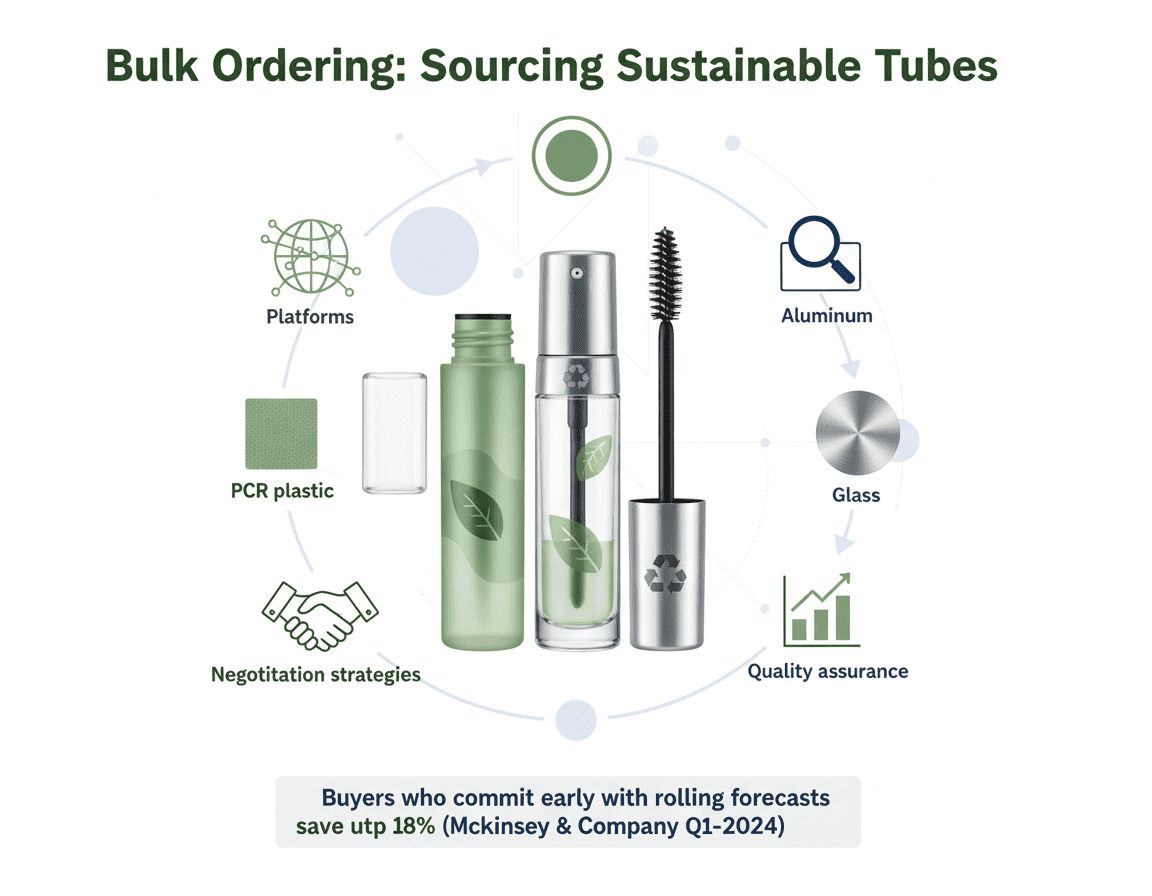Green Mascara Tube: Approaches to Eco-Friendly Choices
It’s no secret—the green mascara tube has become the unsung hero of eco-conscious beauty lines. While your average plastic lash wand ends up in a landfill party that never ends, these greener alternatives are stepping up with materials like paperboard, glass, and aluminum. They’re not only easier on the planet—they scream “We care,” loud enough for savvy shoppers to hear from across the aisle.
Thing is, going sustainable at scale isn’t a walk in Central Park. Bulk orders? Material costs? MOQ nightmares? That’s where smart strategy kicks in—and brands willing to think past glossy finishes start pulling ahead. “Brands using sustainable packaging saw a 21% increase in customer retention,” according to NielsenIQ’s Beauty Sustainability Report, 2022.
If you’re sitting on 100k units and wondering how to make them count without selling your soul (or budget), you’re exactly who this guide was written for—let’s unpack what it takes to go green without losing your edge.
Key Points in the Journey of the Green Mascara Tube
→ Material Matters: Paperboard, glass, and aluminum green mascara tubes offer sustainable alternatives to traditional plastic, reducing environmental impact.
→ Component Design: From cap to pump, each part of a green mascara tube is engineered for recyclability and minimal waste.
→ Bulk Buying Benefits: Ordering 10000+ units can unlock better negotiation power while amplifying sustainability at scale.
→ Visual Appeal Wins: Packaging in eco-toned hues like green, black, and white enhances brand image among conscious consumers.
→ Quality Control Counts: For high-volume orders—like 500000 containers—stringent quality checks ensure consistent performance and compliance.
Worried about Waste? Try Green Mascara Tubes
Sick of tossing out plastic beauty tubes? These smart swaps are changing the game with sustainability and style.
Turning Waste into Worth: Paperboard Green Mascara Tubes
- Paperboard packaging isn’t just a trend—it’s a trash-to-treasure story. These tubes use recycled fiber, cutting down on landfill overflow.
- The green mascara tube design uses minimal ink and water-based adhesives.
- Biodegradable coatings keep your lashes lush without polluting waterways.
- Compostable after use, these tubes break down fast—no guilt, no trace.
- Bonus: They’re lightweight, which slashes emissions during shipping. That’s a double win.
Green Mascara Tube Components from Cap to Pump
- The cap is often made from recyclable aluminum or bamboo—tough yet sustainable.
- The inner pump mechanism can now be built using bio-resins instead of petroleum plastics.
- Outer shells feature molded paperboard, ditching virgin plastic entirely.
- Seals and wipers are developed using compostable elastomers—yes, that tech exists!
- Even the labeling gets an eco-upgrade with soy-based inks.
These tweaks might seem small, but they stack up big when multiplied across thousands of units.
Sustainable Alternatives to Plastic Mascara Jars
• Glass vessels bring a sleek look and infinite recyclability—plus they feel luxe in hand.
• Aluminum options offer durability without the waste trail; think refillable chic.
• Refillable pods are making waves too; pop in a new core without tossing the whole tube.
Each switch chips away at single-use culture while giving your vanity an upgrade.
Scaling Impact with 10000 Items of Green Mascara Tubes
When production hits six figures, even minor changes snowball into major impact:
| Production Volume | CO₂ Reduction per Unit | Water Saved per Unit | Waste Diverted |
|---|---|---|---|
| 10,000 | 0.12 kg | 0.8 L | 6 kg |
| 50,000 | 0.11 kg | 0.75 L | 30 kg |
| 100,000 | 0.10 kg | 0.7 L | 60 kg |
| Projected Growth 2025 | Est. –0.09 kg | Est. –0.65 L | Est.–75 kg |
Now imagine if every brand followed suit—even just once per product cycle.
This isn’t fantasy—it’s already happening with brands like Topfeel nudging the needle forward through large-scale adoption of smarter materials and streamlined manufacturing approaches that reduce waste while keeping performance intact.
Swapping out traditional mascara packaging for more sustainable designs isn’t just good PR—it’s smart business and even smarter stewardship for the planet we all share.
3 Reasons Why Green Mascara Tubes Excel
A closer look at what makes eco-forward mascara packaging more than just pretty tubes—it’s about smarts, sustainability, and style.
Superior Durability through Aluminum and Glass Tubes
- Aluminum tubes resist dents and warping—perfect for long-term use in makeup bags that get tossed around daily.
- Glass tubes, though heavier, bring that premium feel while staying scratch-resistant and easy to sterilize.
- Both materials are inherently eco-friendly, reducing the need for frequent replacements.
Now here’s the kicker: these materials aren’t just tough—they’re fully recyclable without losing quality over time, unlike certain plastics that degrade after each cycle. That means fewer resources wasted and longer-lasting packaging that still looks fresh after months of use.
Simplified Recycling for Plastic Caps and Pumps
Recycling doesn’t have to be a headache when components are thoughtfully designed:
- Most plastic caps used today are made from mono-materials—no mixed polymers—which simplifies sorting at recycling centers.
- Detachable pumps allow users to separate parts easily before disposal, boosting recycling rates.
- Clear labeling on bottom surfaces helps consumers know exactly where each piece should go.
According to Euromonitor’s Beauty Packaging Outlook Q2/2024, “streamlined disassembly increases end-user compliance by up to 38%.” That’s real progress toward cutting down landfill waste from beauty products.
Enhanced Brand Appeal with Green, Black and White Packaging
| Color Element | Psychological Impact | Consumer Preference (%) | Eco Perception Rating |
|---|---|---|---|
| Green | Natural, Safe | 62 | High |
| Black | Premium, Bold | 48 | Medium |
| White | Clean, Minimalist | 54 | High |
These three shades don’t just look good—they speak volumes about values:
• A green-dominant design signals eco-consciousness without saying a word.
• Black accents add sophistication that appeals across age groups and genders alike.
• White space keeps things feeling clean—both literally and visually—enhancing overall brand appeal.
When combined well, this trio creates shelf presence that turns heads while reinforcing sustainable messaging—a win for both aesthetics and ethics.
Why It All Matters for the Eco-Savvy Buyer
Short bursts of insight:
– Shoppers want durability but hate waste; aluminum hits both needs squarely.
– Glass adds elegance without compromising on being sustainable or reusable.
– Simpler recycling instructions mean fewer excuses not to do it right.
People aren’t just buying makeup anymore—they’re buying into values they can wear every day.
How Brands Make It Work in Real Life
Step-by-step breakdown:
Step 1: Choose materials like glass tubes or sturdy aluminum instead of composite plastic shells.
Step 2: Design pumps with detachment points so users can pop off tops before tossing them into bins.
Step 3: Apply minimalist color palettes like green-white-black combos that highlight your eco mission subtly but stylishly.
Step 4: Add QR codes linking buyers directly to disposal guides or refill programs—making sustainability part of the experience itself.
It’s not rocket science—it’s smart packaging built around how people actually live with their products daily.
What Consumers Are Really Looking For
Grouped insights based on feedback:
Functional Expectations:
– Easy-to-carry design without leaks or breakage
– Pump systems that don’t clog over time
Environmental Priorities:
– Use of fully recyclable components like mono-material plastics & metals
– Minimal non-recyclable adhesives or coatings
Visual Preferences:
– Subtle branding with earthy tones like muted greens or soft whites
– Transparent elements showing product level inside
The modern buyer isn’t fooled by greenwashing—they want packaging that walks the talk in form and function when it comes to being truly eco-aware.
The Takeaway According To Market Trends
Here’s what recent stats say:
• Over half of Gen Z consumers surveyed by Mintel in May 2024 said they’d switch beauty brands if another offered “clearer recycling instructions.”
• Brands using glass containers saw an average increase in repeat purchases by nearly 19%, attributed largely to perceived quality upgrades—not formula changes alone!
From materials like aluminum tubes, down to cap recyclability and color psychology—every detail counts when winning over today’s conscious customer base looking for more than just good lashes from their mascara choices—even if it means picking up one more green-tinted tube next time out shopping.
Bulk Ordering: Sourcing Sustainable Tubes
Looking to buy big and stay green? Here’s how to source smart when ordering eco packaging like mascara containers, caps, and pumps.
Top Platforms for Ordering 10000 Pieces of Green Mascara Tubes
Finding the right platforms to bulk order eco-friendly mascara containers can be tricky—but not impossible.
- Alibaba and Made-in-China are two major players offering verified suppliers with thousands of options.
- Global Sources provides a curated list with MOQ filters, so you’re not digging through irrelevant listings.
- For niche or sustainable sourcing, Faire and Abound connect you with smaller producers focused on clean beauty packaging.
You’ll want to filter by certifications—look for FSC-certified paperboard inserts or PCR plastic options. One trick? Use trade shows like Cosmoprof Asia as networking springboards; many sellers there offer backend wholesale deals not listed online.
Comparing Materials: Plastic, Glass and Aluminum Bulk Options
Choosing the right materials isn’t just about cost—it’s about brand message, durability, and impact.
🟢 Plastic
• Lightest weight
• Cheapest shipping
• Can be made from post-consumer resin (PCR)
⚠️ May carry stigma unless clearly labeled as recycled or biodegradable
🔵 Glass
• Premium feel
• Fully recyclable
• Ideal for refillable designs
⚠️ Higher breakage risk during transit
⚪ Aluminum
• Sleek look
• Resistant to corrosion
• Often used in high-end lines
⚠️ Limited color customization unless anodized
When buying in bulk, always ask if the supplier offers mixed material samples. That way you can test which one fits your vibe—and budget—before committing to tens of thousands.
Negotiation Strategies for 100000 Items of Eco Packaging
Securing a deal on six-digit unit counts takes more than just asking nicely. Here’s how buyers are sealing smarter contracts:
- Ask for tiered pricing based on volume brackets—don’t settle on one flat rate.
- Offer longer lead times in exchange for lower costs; many factories prefer predictability over rush orders.
- Lock in long-term agreements that guarantee reorders at fixed prices before inflation bites back.
📌 According to a Q1–2024 report by McKinsey & Company on sustainable sourcing trends in cosmetics packaging, “Buyers who commit early with rolling forecasts save up to 18% compared to those negotiating per batch.”
Also consider third-party agents who specialize in East Asian markets—they often get better rates due to existing relationships with local manufacturers.
Ensuring Quality in 10000 Containers of Caps and Pumps
When you’re talking half a million units—every flaw gets amplified. Here’s what brands do behind the curtain:
🧪 Testing Protocols
• Drop tests simulate shipping damage
• Heat/cold cycles ensure pump integrity under climate stress
🔍 Inspection Phases
• Pre-production sample sign-off
• Mid-line random checks during mass production
• Final inspection before shipment leaves port
📦 Packaging Safeguards
• Double-walled cartons prevent crushing
• Desiccants reduce moisture damage en route
Even if your mascara tube is perfect, a leaky cap can tank reviews fast. Always request QC documentation from suppliers—and don’t shy away from hiring an independent inspector if it’s your first run with them.
FAQs
A green mascara tube leans into materials that are kinder to the planet. Instead of relying on petroleum-based plastics, it often uses:
- Paperboard or cardboard for lighter carbon footprints
- Recyclable glass or aluminum that can be reused without losing quality
- Minimalist designs that cut down on production waste
These choices don’t just reduce pollution—they tell your customers you care.
Absolutely. Suppliers catering to large-scale cosmetic brands understand the importance of visual identity. You can request custom shades—classic black, clean white, even muted earth tones—to match your product line. Just make sure to confirm color matching and finish (matte vs glossy) during sampling.
It depends on what it’s made from—but here’s how it usually breaks down:
- Glass bodies: rinse and drop into regular recycling bins in most cities
- Aluminum components: highly recyclable and retain their integrity through multiple cycles
- Plastic pumps/caps: if designed properly (single-material), they’re accepted at many facilities
Still, always encourage users to check local guidelines—recycling rules vary wildly by region.
You’d think so—but no. Today’s paperboard tubes are surprisingly tough when engineered well. They hold up under pressure and resist moisture with internal linings or coatings. For premium lines aiming for both elegance and eco-friendliness, glass remains unbeatable—it feels luxurious while staying sturdy enough for daily use.
Volume helps—a lot. Once you’re past 10,000 units:
- Per-unit costs begin dropping significantly due to economies of scale
- Material choice matters; cardboard is generally cheaper than aluminum or glass
- Customizations like embossing or foil stamping will bump up prices slightly
The trick lies in balancing aesthetics with budget early in negotiations.
They don’t leave anything to chance. Quality control starts before production even begins—with pre-production samples approved down to the tiniest detail: cap fitment tension, pump smoothness, color accuracy under different lights.
During manufacturing:Random batch inspections catch inconsistencies fast.And right before shipping?Photos and videos show real-time performance tests—because one faulty pump out of thousands could hurt customer trust instantly.







